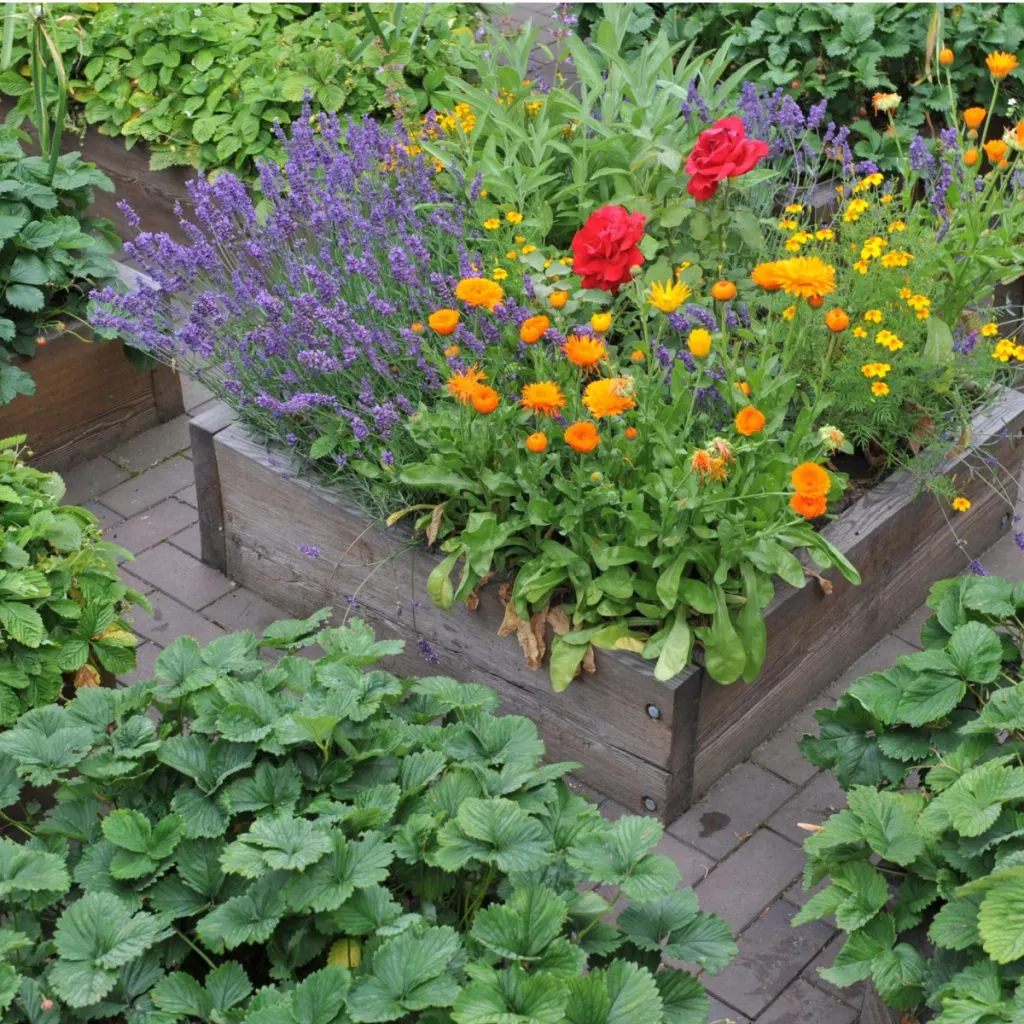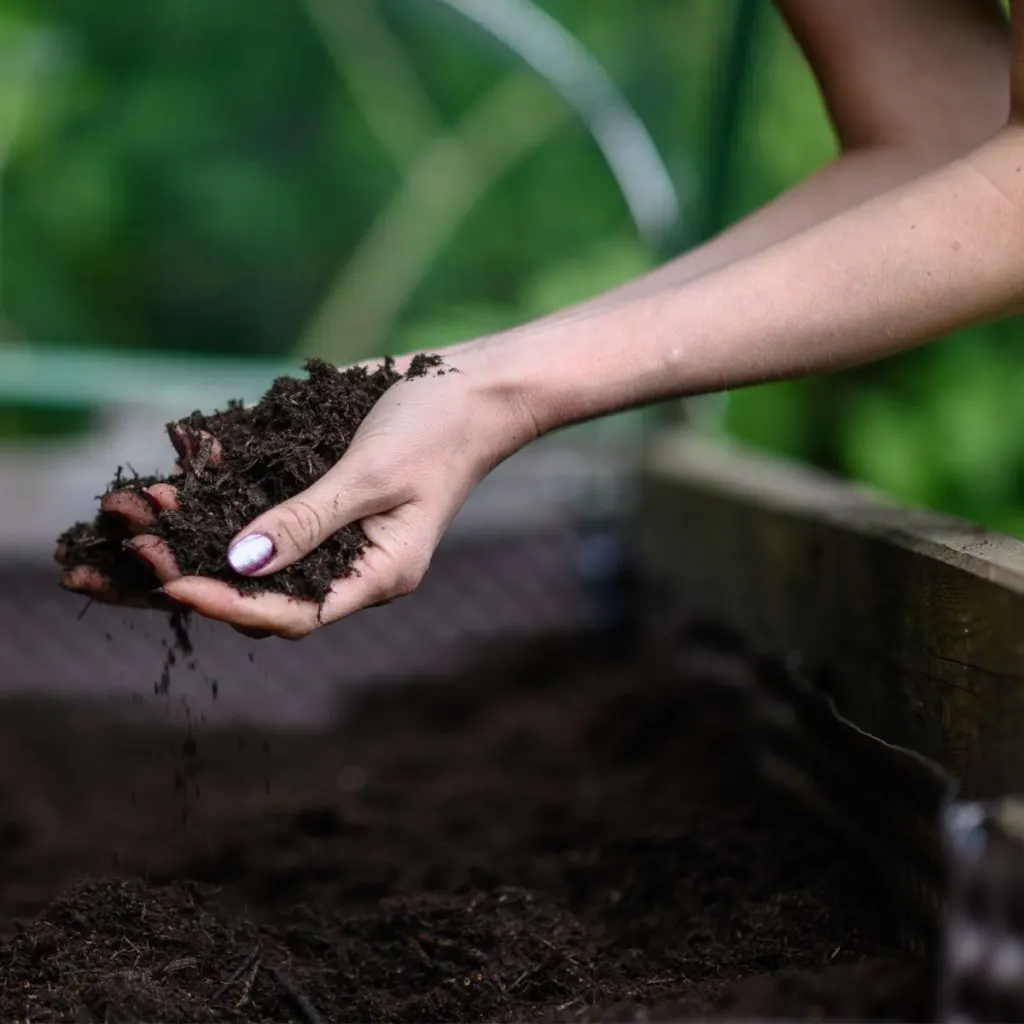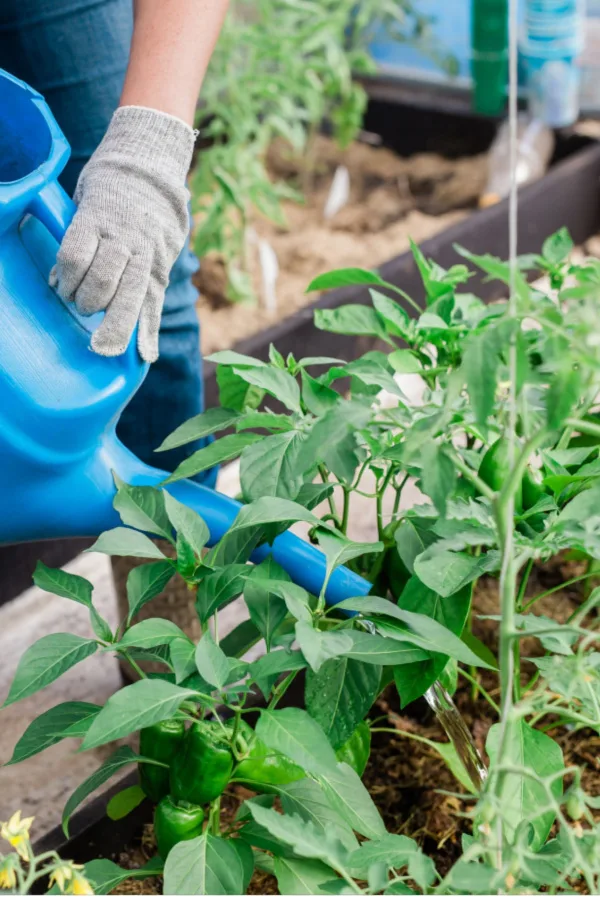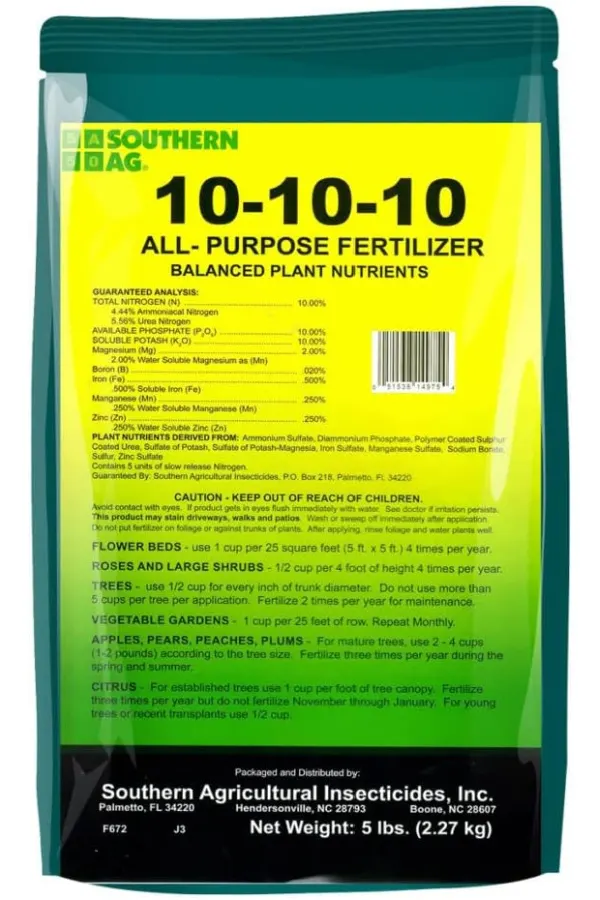Looking for the best way to fertilize your raised beds this spring – and exactly what to use to re-energize and power up your soil for a great growing season?
Raised beds are incredible for growing everything from vegetable plants and herbs to annual flowers, perennial flowers and more. But one thing is for sure, if you have been growing in the same beds for multiple years without recharging your soil – it’s more than likely worn out and tired!
Plants need nutrients to grow. And as they take those nutrients in from the soil as they grow, they can quickly deplete it of its energy. Especially if you happen to be growing flowering annuals or vegetable plants that are heavy feeders.

Whether you grow tomato plants, pepper plants or big flowering annuals such as marigolds, petunias and geraniums, all of these plants consume large amounts of nitrogen, phosphorous, and potassium. They also need and use other trace minerals and nutrients in the soil to grow and produce their blooms, fruits and flowers.
Unfortunately, if all of those aren’t replenished in the soil, your plants are going to suffer. As you will see at the end of the article, adding compost and other soil amendments each and every year certainly can go a long way in keeping your soil healthy. But if you really want to recharge your soil with ready-to-go power – adding fertilizer is the answer!
How To Fertilize Raised Beds In Spring
One of the best and easiest ways to re-energize raised bed soil is with fertilizer. Although many think of fertilizing plants during the season, adding fertilizer to your soil in the early spring before planting is a great way to have the nutrients your plants need in place – right from the start!
It’s not that fertilizing after you plant is not important. It too is vital in helping to keep your plants powered up as they grow. But by adding in a dose prior to planting, you really set the stage for your plants to get off to a fast start.

The Best Fertilizer For Raised Beds – Knowing What To Use & When
There are actually two kinds of fertilizers that work well for raised beds – granular fertilizer and liquid fertilizer. But knowing when and how to apply each of these two to your raised beds is the real secret to success.
The good news is that figuring out the timing of each is actually very simple. Granular fertilizers are the way to go to power up beds in early spring before planting. It’s best to apply granular fertilizer a week or two before you plant. This allows the granules to absorb into the soil and power it up.
Meanwhile, liquid fertilizers are best to use during the remainder of the growing season. These are perfect for supplying nutrients once plants are in the ground. With re-energizing your soil in mind – here is a look at how to use each of the two fertilizers to help your plants grow better than ever this year!
Using Granular Fertilizer In The Spring – How To Fertilize Raised Beds In Spring
Granular fertilizers are small, dry granules that release their energy slowly as they decompose in the soil. This is exactly why they are perfect for recharging beds in the spring before planting. Especially if you use a fertilizer with an equal balance of nitrogen, phosphorous and potassium.
Plants use nitrogen for growing and developing foliage. It is critical for fast plant growth and for strong healthy stems and leaves. Phosphorous is vital for helping plants to bloom and flower or fruit. Last but not least, potassium helps plants absorb water and nutrients and stay healthy.
It’s these three nutrients that plants absorb and need most from the soil. Of course, they obviously are the three most important to replace – and that can be done quite easily with an all purpose granular fertilizer.
For spring revitalizing, it’s best to use a granular fertilizer with a 10-10-10 N-P-K rating. This will have equal portions of each in a quantity that will recharge the soil without the risk of overpowering plants. Affiliate Link: Southern Ag All-Purpose Fertilizer 10-10-10
Adding Just The Right Amount – How To Fertilize Raised Beds In Spring
So how much should you use for raised beds? When trying to re-energize in the spring, a good rule of thumb is to work 1/8th of a cup of fertilizer into every 2 to 3 square feet of soil space. Apply the fertilizer on top and then use a rake or hand shovel to work it into the first few inches of soil. Then, water the surface well.
By working the fertilizer in a bit and moistening the soil, it helps the granules begin to leach out their nutrients to the soil. The good news is that like the fertilizer featured above, many 10-10-10 formulas also include other trace minerals of other important energy sources to help recharge your soil even more.
Liquid Fertilizers – How To Fertilize Raised Beds In Spring
If granular fertilizers are the champion of recharging beds in early spring – liquid fertilizers are the star of the show for in-season fertilizing.

Liquid fertilizer absorbs into plants both through the soil and through their leaves. By applying this form of energy while plants are growing, you can keep them powered up for big growth. But here again, the type of liquid fertilizer you use is critical for how successful it is.
In early spring, using an equal balance of nitrogen, phosphorous and potassium is important. It lets the soil recharge with complete balance. And early on, when plants or seeds first start to grow, having a balance of all three nutrients is best.
But once plants begin to grow, they actually need more phosphorous and potassium than nitrogen. Why? Because as a plant matures, it needs these two nutrients most to power blooming. Unfortunately, if it gets excess nitrogen, it will simply use it to grow bigger – and flower or fruit less!
For liquid fertilizing, it’s best to use a product that has a ratio of phosphorous and potassium that is much higher. It will result in plants with way more blooms, whether it be flowers, or vegetables! Affiliate Link: Farmer’s Secret 2-15-15 Fruit & Bloom Booster Liquid Fertilizer (32oz)
When applying liquid fertilizers, dilute your mix to half of the recommended dosage and apply every ten to fourteen days. This gives nutrients a constant source of energy, but at a lower dose to prevent overgrowing.
Keeping Your Soil Healthy – How To Fertilize Raised Beds In Spring
In addition to fertilizing your beds, adding compost and other soil amendments will go a long way in keeping your soil healthy and strong. Even though fertilizer adds nutrients, soil also needs to have humus and structure. See our article: How To Create Great Raised Bed Soil – 4 Must Add Ingredients To Power Your Beds!

Compost is teeming with nutrients. As are worm castings, wood ash, egg shells and coffee grounds. Adding any or all of these to your soil along with fertilizer will help keep it alive and strong.
These materials can actually be added at any time of the year to help. But together, with fertilizing on a regular schedule, they can all work to let you have the best performing raised beds around!
This Is My Garden
Follow Our Facebook Page For Great Gardening Tips And Advice! This Is My Garden Facebook Page
This Is My Garden is a garden website created by gardeners, for gardeners. Jim and Mary Competti have been writing gardening, DIY and recipe articles and books and speaking for over 15 years from their 46 acre Ohio farm. They publish three articles every week, 52 weeks a year. Sign up today to follow via email, or follow along!

